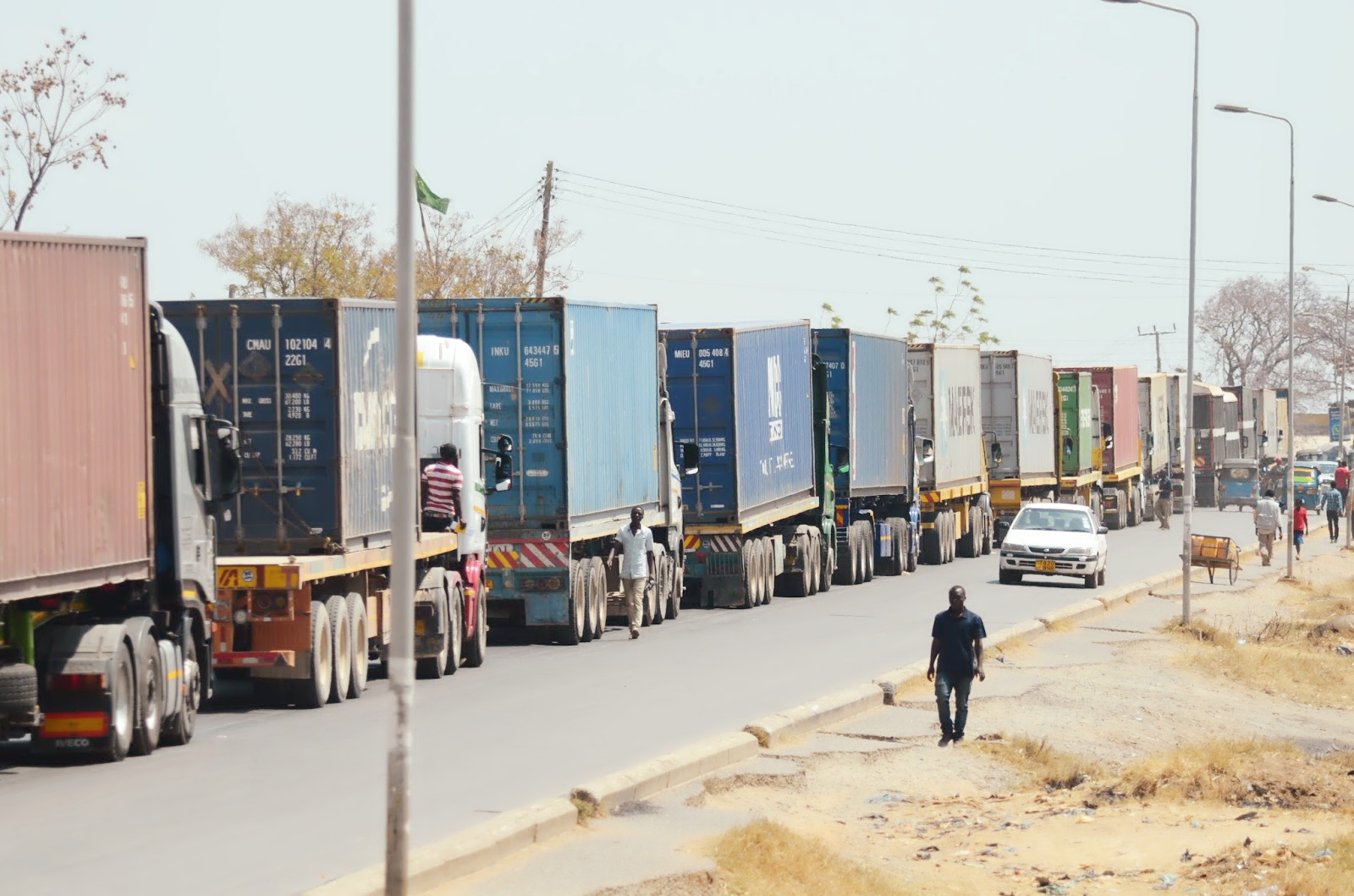Prime
Why heavy-duty lorries are a weighty problem in Dar

The proliferation of lorries in Dar es Salaam has come at a heavy cost in terms of damaged infrastructure and inconvenience to other road users. PHOTO | FILE
What you need to know:
- Heavy-duty commercial vehicles are wreaking havoc on roads and associated infrastructure in the city
Dar es Salaam. A heavy-duty lorry crashed into a newly-built BRT stand in Dar es Salaam earlier this month, triggering widespread consternation in the city and beyond.
The stand now bears the scars of an accident many have labelled not just unfortunate, but symbolic of a larger, deeper and potentially costly challenge – the unchecked presence of heavy-duty lorries in the heart of Tanzania’s busiest city.
Despite ongoing efforts by city and traffic authorities to control lorry movement during peak hours and limit their access to central roads, commercial vehicles continue to dominate key urban lanes, often with devastating consequences.
From accidents, costly road repairs, infrastructure damage and frustrating delays for motorists to time lost in traffic and unsafe pedestrian conditions, the cost of accommodating these massive vehicles is mounting.
The government has allocated Sh301.72 billion for the rehabilitation of roads and bridges damaged by heavy rains and floods between June 2023 and April 2024.
According to the Deputy Minister in the President’s Office (Regional Administration and Local Government), Ms Zainab Katimba, this budget will cover the repair of 1,742.19 kilometres of roads, 4,260 culverts, 319 bridges and 108,833 metres of drainage systems affected by the rains.
Although not all of this damage was caused by lorries, transport experts argue that heavy commercial vehicles significantly accelerate wear and tear, particularly on roads not designed to carry constant heavy loads.
Land Transport Regulatory Authority (Latra) road transport director Johansen Kahatano said the recent surge in cargo transportation activity, especially in Dar es Salaam, has been directly influenced by improvements in port efficiency.
“This has led to more goods coming in, which means more lorries are needed to transport them to upcountry regions and neighbouring countries,” he said.
Mr Kahatano, however, expressed optimism about the future, noting that the completion of the Kwala dry port will help ease the pressure on Dar es Salaam.
“Once Kwala becomes operational, much of the cargo will no longer need to pass through the city. This will significantly reduce the number of heavy lorries on our urban roads and with that, the problems of road destruction and traffic jams will also ease,” he said.
He also pointed out that even now, at high-congestion areas like the port, there are already queue-based systems in place to regulate the entry of lorries and minimise traffic pressure on city roads.
“This coordination helps prevent unnecessary traffic in town and ensures a better flow of vehicles. We are working to strengthen such systems to keep the roads safer and more efficient.”
For his part, Tanzania National Roads Agency (Tanroads) chief executive Mohamed Besta said the law is clear when it comes to accountability.
“If anyone causes damage to road infrastructure and it is proven, the law is supposed to take its course. We have procedures for cost recovery and legal follow-up. No one is above the law,” he said.
Mr Besta added that Tanroads, in collaboration with the police and city councils, continues to monitor and take action where necessary, but emphasized that prevention is always better than enforcement.
“These are our roads, it is a responsibility of each and everyone to safeguard them for the benefits of our country’s economy.”
Tanzania Truck Owners Association (Tatoa) vice chairperson Rahim Dossa said challenges faced by the freight transport sector in Dar es Salaam are still significant due to the way the city is planned.
“Dar es Salaam has faced major challenges due to its infrastructure. This makes our work difficult, but we expect to see improvements in the environment as time goes on. We are proud that efforts to enhance infrastructure are ongoing and we hope that one day, we will have better conditions for operations. We anticipate that one day, we will no longer be blamed for this, because the environment will be better, providing us with more favourable conditions to operate,” he said.
A senior engineer working with a Dar es Salaam-based road consultancy firm who preferred anonymity said allowing lorries on inner city roads contributes to the early deterioration of asphalt surfaces, as many routes in districts like Ilala, Temeke and Kinondoni were originally designed for lighter traffic.
“The road life cycle is being halved in some areas. We are seeing cracks, rutting and potholes within just a few years after rehabilitation, which is not normal,” he said.
“Even new infrastructure isn’t safe. The BRT stations and dedicated lanes were meant to ease public transport, yet they’re now being damaged by private and commercial lorries using or blocking them, especially at night or during low-patrol hours.”
Taxi drivers who rely on quick and frequent trips within the city say they are among the most affected. A driver operating between Mwenge and Posta, Mr Apolinary Kitea, said lorries cause delays, block lanes when reversing or parking to load and offload goods and often drive without regard for smaller vehicles.
“Sometimes we’re forced to stop for 10, even 15 minutes because a lorry has blocked one side of the road in Kariakoo or Samora Avenue. And if it breaks down, no one comes quickly to tow it. That’s lost time, lost fuel and lost money,” he said.
Another driver, Mr Emmanuel Mgimba, who works the route between Buguruni and Tazara, recalled two near-miss accidents involving container lorries on slippery roads during recent rains.
“It’s like we are sharing space with moving buildings. When they enter the city in numbers, we can’t breathe,” he said.
But lorry drivers themselves say the city gives them little choice. A driver with a logistics firm, Mr Idd Nchimbi, said most of their delivery schedules are dictated by port and warehouse deadlines, which are rarely in sync with city by-laws.
“Most customers want their goods at a certain hour and sometimes that means entering town during restricted periods. If the infrastructure was better and we had parking hubs outside town, it would be easier to follow the rules,” he said.
Another driver, Mr Joel Masimango, shared similar views, adding that the lack of designated cargo drop-off points forces lorries to squeeze into city lanes.




